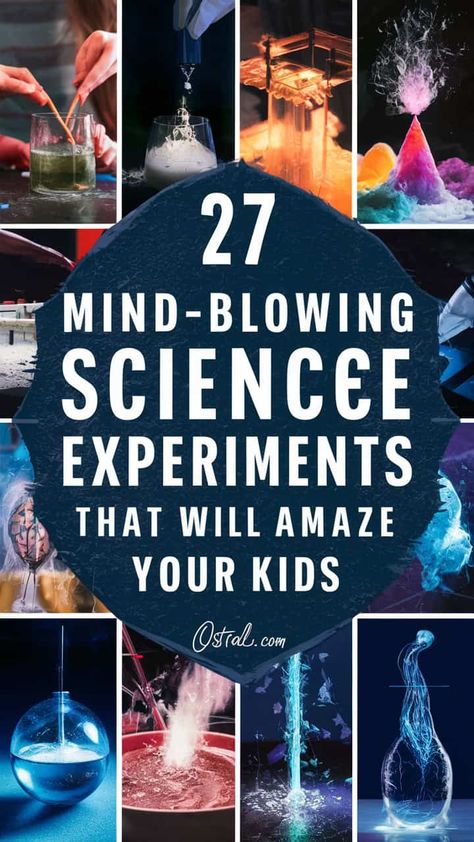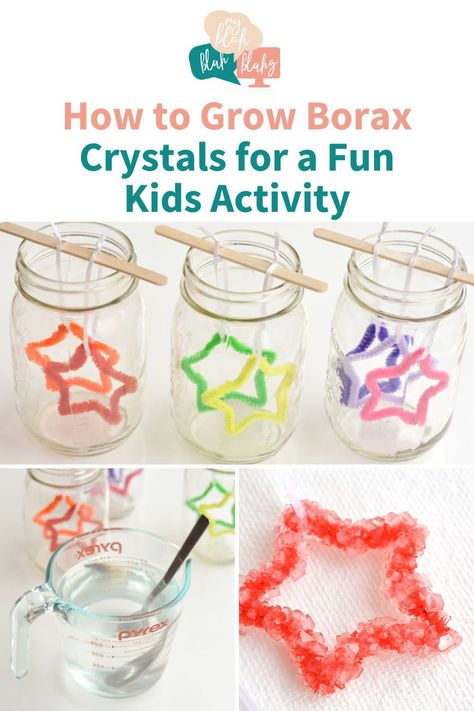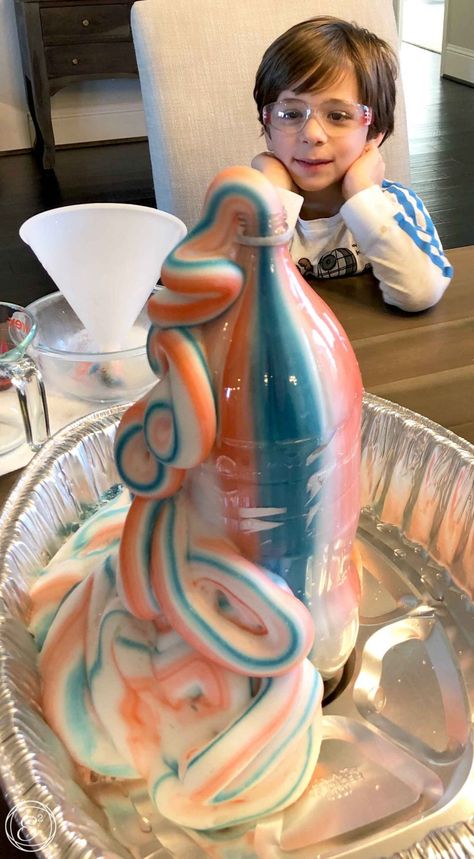Preschool Vibes on Instagram: "This week at our preschool science center, students are exploring the fun interplay of water and oil! I filled a cup halfway with water and halfway with oil, then set out two cups of liquid watercolor. Using eyedroppers, they drop the colored water into the oil, watch it form a little ball, and then see it dissolve once it breaks through into the water at the bottom—fascinating to watch!"
3.3K views · 1.8K reactions | Sure! Here’s a catchy Instagram Reels caption for your video: "Watch this! ✨ These paperclips seem to magically float… until we add soap! 🫧 What’s happening here? It’s all about surface tension—the invisible force holding water together. 🏊♂️ But when we introduce soap, it breaks that tension, causing the clips to sink! 🔬⚡ Try it yourself and tag us! #ScienceMagic #STEMFun #SurfaceTension" This experiment demonstrates the principles of surface tension and surfactants (like soap). Here's how it works: Surface Tension and Floating Clips: Water molecules at the surface form strong cohesive bonds, creating a 'skin' on the water due to surface tension. A paperclip, though denser than water, can sit on this surface if placed gently, as the tension prevents it from sinking. Effect of Soap: Soap is a surfactant, meaning it disrupts water’s cohesive bonds and reduces surface tension. When soap is added, the surface tension weakens, and the water can no longer support the clips. As a result, the clips lose their support and sink. This principle is also why insects like water striders can walk on water, but adding soap makes them struggle to stay afloat! | Little Learners Supplies | Facebook
3.3K views · 1.8K reactions | Sure! Here’s a catchy Instagram Reels caption for your video: "Watch this! ✨ These paperclips seem to magically float… until we add soap! 🫧 What’s happening here? It’s all about surface tension—the invisible force holding water together. 🏊♂️ But when we introduce soap, it breaks that tension, causing the clips to sink! 🔬⚡ Try it yourself and tag us! #ScienceMagic #STEMFun #SurfaceTension" This experiment demonstrates the principles of surface tension and surfactants (like soap). Here's how it works: Surface Tension and Floating Clips: Water molecules at the surface form strong cohesive bonds, creating a 'skin' on the water due to surface tension. A paperclip, though denser than water, can sit on this surface if placed gently, as the tension prevents i
Best Kids Activities on Instagram: "Simple Science Experiment: Oil, Water, and Food Coloring. 👩🔬🧪 Oil and water do not mix. Oil is less dense than water and floats on top of the water. Food coloring is water-based so it mixes with the water. ( cc @hardwire_media )⠀ ⠀⠀ When you add the food coloring to the oil it will not mix. Once you add the oil to the water, the food colored droplets start to drop down since they are heavier than the oil. ⠀⠀ ⠀⠀ Once they drop into the water they start to dissolve and look like tiny explosions (or fireworks).⠀⠀ ⠀⠀ ⠀⠀ >>>> SHARE this idea! 👉👉👉👉👉👉 ✨⠀⠀ ⠀⠀ ⠀⠀ #letskeepkidsbusy⠀⠀⠀⠀⠀ ⠀⠀⠀⠀⠀ ⠀⠀⠀⠀⠀ ⠀⠀⠀⠀⠀ ⠀⠀⠀⠀⠀ ➡️ Like ❤️, Share 👥, and Save this post for later! 👉⠀⠀⠀⠀⠀ ⠀⠀⠀⠀⠀ 🌺If you have a child's heart, you will also have their mind. 🌺⠀⠀⠀⠀⠀ ⠀⠀⠀⠀
7.4K views · 341 reactions | ✨ Science Experiment #30 : Coin Drop ✨ Recommended Age: 3+ years ✨ Materials Required: ▫️Coin ▫️Dropper ▫️Water ✨ Procedure: 1. Place a coin flat on a surface. 2. Fill a dropper with water. 3. Drop water, one drop at a time, onto the coin. 4. Watch as the water forms a dome! ✨ Science Behind It: ▫️Surface tension is the force that holds water molecules together at the surface. ▫️This force acts like a "skin" that allows the water to stay in the shape of a dome on the coin. ▫️When the drops are added, the surface tension prevents the water from spilling off until it becomes too heavy for the surface tension to hold. ✨ How to Explain to a Toddler in a Story Way: ▫️Imagine the water is like a little superhero that holds hands with its friends, making a big water bubble on the coin! ▫️It doesn’t want to let go! ✨ Skills Developed: ▫️Hand-eye coordination ▫️Fine motor skills ▫️Observation and curiosity Benefits: ▫️Encourages scientific thinking ▫️Enhances concentration ▫️Promotes learning through play 📍Follow @thelearningpathway 📍Save & Share [surface tension experiment, penny drop science, simple science for kids, kids science experiments, water science activity, toddler science activity, fun science experiment, learning through play, kids learning, science for toddlers] | The Learning Pathway | Facebook
5.9K views · 253 reactions | ✨ Science Experiment #30 : Coin Drop ✨ Recommended Age: 3+ years ✨ Materials Required: ▫️Coin ▫️Dropper ▫️Water ✨ Procedure: 1. Place a coin flat on a surface. 2. Fill a dropper with water. 3. Drop water, one drop at a time, onto the coin. 4. Watch as the water forms a dome! ✨ Science Behind It: ▫️Surface tension is the force that holds water molecules together at the surface. ▫️This force acts like a "skin" that allows the water to stay in the shape of a dome on the coin. ▫️When the drops are added, the surface tension prevents the water from spilling off until it becomes too heavy for the surface tension to hold. ✨ How to Explain to a Toddler in a Story Way: ▫️Imagine the water is like a little superhero that holds hands with its friends, making a big
Kim McLeod | The Best Ideas for Kids on Instagram: "FLOATING BUTTERFLY 🦋😮 This simple science experiment is so amazingly cool! 😎 Follow me @bestideasforkids for more fun activities for kids! 🦋 I love that you only need a few things to do it too. This science experiment is from our friends book, Super Simple Science Experiments for Curious Kids by @raisingdragons. We did a leaf and ghost also but the butterfly may be my favorite. 🦋 Here’s what you need: - Paper clip - String - Tissue paper - Tape - butterfly template (on my site search butterfly template on thebestideasforkids.com) - Magnet wand 🧲 ** your magnet must be strong enough and we found magnet wands are typically strong enough for it to work. How to do it: Tie the string around the paper clip and then glue inside th
The Learning Pathway on Instagram: "✨ Science Experiment #36 : The Floating and Sinking Paper Clips! ✨Recommended Age: 3+ years ✨Materials Required: ▫️A bowl of water ▫️Paper clips ▫️Fork ▫️Dish soap ✨ Instructions: 1️⃣ Fill a bowl with water. 2️⃣ Gently place paper clips on the surface using a fork. Watch them float! 3️⃣ Add a drop of dish soap. 4️⃣ See how the paper clips sink instantly! ✨ Science Behind It: ▫️When you add dish soap to the water, it lowers the surface tension. ▫️Water molecules stick together due to surface tension, which helps objects like paper clips float. ▫️The soap disrupts this tension, causing the paper clips to sink because the water can no longer hold them up. ▫️It’s a simple example of how soap interacts with water on a molecular level! ✨ How to Explain
2K views · 511 reactions | ✨ Science Experiment #4 :Air Pressure Bottle Experiment Recommended Age: 4+ (With supervision) 📍Materials Required: 1. Empty plastic bottle 2. Water 3. Straw 4. Tape or glue 5. Pin or sharp object 📍How to Make: 1. Fill the bottle with water (leave some space at the top). 2. Make a small hole on the side of the bottle near the bottom. 3. Insert the straw into the hole and seal it with tape/glue to prevent leaks. 4. Close the bottle cap and observe no water flows out. Open the cap, and the water flows through the straw. 📍Science Behind It: When the bottle is sealed, no air can enter to replace the water, so it stays in the bottle. Opening the cap allows air to push down on the water, forcing it out through the straw. This demonstrates the concepts of air pressure and gravity. 📍How to Explain to a Toddler: When the bottle is closed, the water stays inside because no air can push it out. But when we open the bottle, air helps push the water through the straw into the cup. Follow: @thelearningpathway for more fun experiments. 📍Benefits: ✅Encourages curiosity and exploration ✅Teaches basic science concepts ✅Develops problem-solving and observation skills ✅Fun, hands-on activity 📍SAVE & SHARE Credit: Original owner. DM for credit/removal [Science experiment, air pressure, toddler activity, water experiment, fun with science, preschool learning, STEM, hands-on activity, educational play, air and water] | The Learning Pathway | Facebook
2K views · 511 reactions | ✨ Science Experiment #4 :Air Pressure Bottle Experiment Recommended Age: 4+ (With supervision) 📍Materials Required: 1. Empty plastic bottle 2. Water 3. Straw 4. Tape or glue 5. Pin or sharp object 📍How to Make: 1. Fill the bottle with water (leave some space at the top). 2. Make a small hole on the side of the bottle near the bottom. 3. Insert the straw into the hole and seal it with tape/glue to prevent leaks. 4. Close the bottle cap and observe no water flows out. Open the cap, and the water flows through the straw. 📍Science Behind It: When the bottle is sealed, no air can enter to replace the water, so it stays in the bottle. Opening the cap allows air to push down on the water, forcing it out through the straw. This demonstrates the concepts of air
11K views · 505 reactions | ✨ Science Experiment #28 : Water Transfer Experiment ✨ Recommended Age: 3+ ✨ Materials Required: ▫️2 glasses ▫️Bendable straw ▫️Colored water ✨ Procedure: 1. Take two glasses, one filled with colored water. 2. Dip the bendable straw in the water and press one end firmly. 3. Flip the straw over the empty glass and release your finger and watch the water flow! ✨ Science Behind It: ▫️The water moves through the straw because of air pressure. ▫️When you press the straw’s open end, the air is trapped inside, and when you release your finger, the pressure difference causes the water to flow out and into the other glass. ▫️This simple experiment demonstrates how air pressure can move liquids! ✨ How to Explain to a Toddler in Story Way: ▫️The straw is like a magic tube that helps the water travel from one glass to another, just like when we pour juice into a cup! ✨ Skills Developed: ▫️Fine motor skills ▫️Understanding cause and effect ▫️Observation skills ✨ Benefits: ▫️Encourages curiosity ▫️Introduces basic science concepts ▫️Improves hand-eye coordination 📍Follow @thelearningpathway 📍Save & Share [water transfer experiment, science experiment for toddlers, easy science experiment, fun learning activity, kids science project, air pressure experiment, water flow demonstration, hands-on learning, simple science for kids, toddler activities] | The Learning Pathway | Facebook
11K views · 505 reactions | ✨ Science Experiment #28 : Water Transfer Experiment ✨ Recommended Age: 3+ ✨ Materials Required: ▫️2 glasses ▫️Bendable straw ▫️Colored water ✨ Procedure: 1. Take two glasses, one filled with colored water. 2. Dip the bendable straw in the water and press one end firmly. 3. Flip the straw over the empty glass and release your finger and watch the water flow! ✨ Science Behind It: ▫️The water moves through the straw because of air pressure. ▫️When you press the straw’s open end, the air is trapped inside, and when you release your finger, the pressure difference causes the water to flow out and into the other glass. ▫️This simple experiment demonstrates how air pressure can move liquids! ✨ How to Explain to a Toddler in Story Way: ▫️The straw is like a
We think you’ll love these
Related Interests
Tiny Robin | Play & Learn at Home 🎨 on Instagram: "Here’s a super fun and easy science experiment your kids will LOVE! Perfect for a little afternoon magic. ✨ How to Do It: 1. Take a cotton pad and add food coloring to it. Use one color or mix several for an extra vibrant effect. 2. Add a drop of dish soap to the colored cotton pad. 3. Gently place the cotton pad into a bowl of milk and watch the colorful explosion happen! 🌈💥 💡 Why does this happen? The dish soap breaks down the fat molecules in the milk, causing the colors to spread out in beautiful, swirling patterns. Would you try this? 👇"
The Learning Pathway on Instagram: "✨ Science Experiment #33 :The Floating and Sinking Orange. ✨ Recommended Age: 3+ years (with supervision) ✨Materials Required: ▫️2 glasses or bowls of water ▫️1 whole orange ▫️1 peeled orange ✨ Instructions: 1. Fill two glasses with water. 2. Drop the whole orange into one glass and observe—it floats. 3. Peel the second orange and drop it into the other glass. Notice—it sinks! ✨ Science Behind It: This experiment demonstrates the concepts of density and buoyancy. 1️⃣ Why does the whole orange float? The peel has tiny air pockets that reduce the orange’s overall density. Since it's less dense than water, it floats. 2️⃣ Why does the peeled orange sink? Removing the peel also removes the air pockets. The orange itself is denser than water, so it sinks
Tiny Robin | Play & Learn at Home 🎨 on Instagram: "Did you know you can make water repel your hand using just baby powder? Try this cool experiment with your kids! Sprinkle some powder on the surface of the water, then dip your hand in and watch the magic happen. Your skin stays dry because the powder creates a hydrophobic barrier that pushes the water away. A simple, hands-on way to explore chemistry and surface tension with little scientists at home!🤩🧑🔬 ✅ Follow for more science experiments! #kidsscience #kidsscienceexperiments #scienceforkids #preschoolscience #toddlerscience #educationalactivities #experimentsforkids"




















